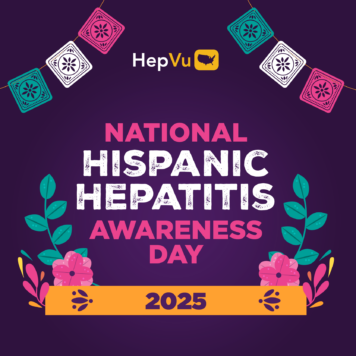Selected and summarized by Ronald O. Valdiserri, MD, MPH, Professor, Department of Epidemiology, Rollins School of Public Health, Emory University, and Co-Chair of HepVu.
Dr. Valdiserri reviews significant articles on prevention, public health, and policy advances in viral hepatitis. This month, he highlights “Efficacy of Direct-acting Antivirals for Chronic Hepatitis C Virus Infection in People who Inject Drugs or Receive Opioid Substitution Therapy: A Systematic Review and Meta-Analysis,” authored by Graf C, Mucke M, Dultz G, et al. Published in the Clinical Infectious Diseases, June 2020, vol. 70 (11): 2355-2365.
What question(s) does this study address?
The AASLD (American Association for the Study of Liver Diseases) and the IDSA (Infectious Diseases Society of America) are very clear that people who inject drugs (PWID) should be tested for Hepatitis C virus (HCV) and, if found to be infected, should be treated. Their guidelines state that “Active or recent drug use or a concern for reinfection is not a contraindication to HCV treatment.” Despite this guidance, some providers may be hesitant to treat PWID for Hepatitis C, because of concerns about poor adherence and the risk of re-infection. Graf and her colleagues conducted a systematic review of the published medical literature from October 1, 2010 (the date of the first publication about the first interferon-free, direct acting agent to treat Hepatitis C) to March 1, 2018. They sought to determine rates of cure, adherence, and Hepatitis C reinfection among PWID who received interferon-free treatment for Hepatitis C infection, both current users and those on opioid substitution therapy (OST).
What are the major findings of this report/article?
- The researchers reviewed over 5000 publications, eventually identifying 23 studies that were included in the metaanalysis. Studies were from Europe (n=12), Australia (n=7), U.S. (n=3), and Canada (n=1). The combined studies involved 1702 persons receiving OST, 538 active PWID, and 19,723 patients who served as controls.
- Among patients on OST, the pooled SVR (sustained virologic response, or cure) was 90% versus 93% for those not receiving OST. The pooled SVR for PWID was 88%, compared to 92% in patients with no active drug use.
- The researchers found no significant difference in terms of pooled rates of cure (SVR), adherence, and therapy discontinuation between patients on OST and controls as well as between PWID and controls.
- Only 9 studies reported Hepatitis C reinfection rates: 7 studies involving persons on OST (837 persons) and 2 studies for PWID (188 persons). Among patients on OST, Hepatitis C reinfection rates ranged from 0.0 to 12.5 per 100 person years; among PWID the risk of reinfection ranged from 0.0 to 2.6 per 100 person years.
What are the implications for the prevention and control of viral hepatitis?
- The findings of this metaanalysis indicate that DAA (direct acting agent) treatment for Hepatitis C is highly effective and safe in PWID and persons on OST. The Hepatitis C treatment outcomes in PWID and persons on OST were found to be similar to persons without a history of injecting drugs.
- The potential risk of Hepatitis C reinfection among persons who inject drugs is not a contraindication to Hepatitis C treatment, but it does speak to the need to provide access to sterile injection equipment for PWID who are treated for Hepatitis C.
- Modeling studies in the U.S. and Europe suggest that scaling-up Hepatitis C treatment, opioid substitution therapy, and harm reduction services, including ready access to sterile syringes, could reduce Hepatitis C transmission among PWID.
- Current drug use or OST should not be a barrier to Hepatitis C treatment.



